The 2018 Kadar Family Award for Outstanding Research
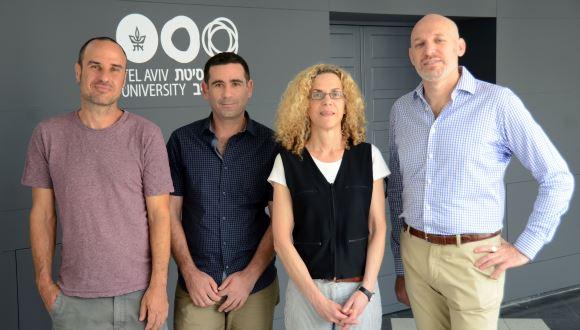

The Kadar Family Award for Outstanding Research at Tel Aviv University, inaugurated in 2015, celebrates pioneering scientists and scholars who have reached the highest levels of excellence in both research and teaching. The Award is granted annually to four TAU researchers, two senior and two junior faculty members, from across the entire spectrum of faculties and disciplines on the TAU campus.
Below are excerpts from talks by the 2018 award recipients. You can watch the full videos at https://english.tau.ac.il/kadar_prizewinner_video_gallery.
Prof. Ron-Goldreich, School of Electrical Engineering at the Iby and Aladar Fleischman Faculty of Engineering – Efficient Problem-Solving Algorithms
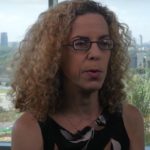 The notion of algorithms and their importance is a part of our everyday life. Algorithms are used everywhere, from search engines to medical applications. Sometimes we need to deal with huge networks, in which case classic efficiency is just not good enough. In order to be very efficient, [we use randomization and sampling], such as in election polls and quality testing of products. However, the challenge is in proving rigorously that the algorithm works, which requires mathematical reasoning and tools. By proving correctness, we ensure that the algorithm not only works well on one particular type of network, but on all possible networks. Therefore, it can serve as a basis for different real-world applications on social networks, biological networks, and other networks that may arise in the future.
The notion of algorithms and their importance is a part of our everyday life. Algorithms are used everywhere, from search engines to medical applications. Sometimes we need to deal with huge networks, in which case classic efficiency is just not good enough. In order to be very efficient, [we use randomization and sampling], such as in election polls and quality testing of products. However, the challenge is in proving rigorously that the algorithm works, which requires mathematical reasoning and tools. By proving correctness, we ensure that the algorithm not only works well on one particular type of network, but on all possible networks. Therefore, it can serve as a basis for different real-world applications on social networks, biological networks, and other networks that may arise in the future.
Prof. Assaf Pinkus, Art History, The David and Yolanda Katz Faculty of the Arts – The History of Violence and Its Representations
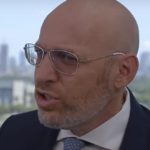 Why does our society consume violence the way that it does? What does it teach us about the history of violence and its representations? During the 14th century, new martyrdom imagery appeared. All parts of the body were [depicted as] under attack: splitting skulls, enucleating eyes, yanking teeth, ripping out nails, boiling alive, cutting off breasts and other mutilation never previously represented. Why this? Why now? Before the 13th century, violence was not understood as something physical or negative. Denying God or the afterlife from someone, that was a violent act. Injuring someone’s body meant healing or saving his soul. By the 14th century, however, body and soul started to enjoy the same status, and as such, images of physical violence were experienced as something violent. The new discourse on violence and bodily integrity was a watershed of early modern individuality. This suggests that 14th century visualization of violence changed and shaped the world as art still does.
Why does our society consume violence the way that it does? What does it teach us about the history of violence and its representations? During the 14th century, new martyrdom imagery appeared. All parts of the body were [depicted as] under attack: splitting skulls, enucleating eyes, yanking teeth, ripping out nails, boiling alive, cutting off breasts and other mutilation never previously represented. Why this? Why now? Before the 13th century, violence was not understood as something physical or negative. Denying God or the afterlife from someone, that was a violent act. Injuring someone’s body meant healing or saving his soul. By the 14th century, however, body and soul started to enjoy the same status, and as such, images of physical violence were experienced as something violent. The new discourse on violence and bodily integrity was a watershed of early modern individuality. This suggests that 14th century visualization of violence changed and shaped the world as art still does.
Prof. Erez Ben-Yosef , The Jacob M. Alkow Department of Archaeology and Ancient Near Eastern Cultures – Iron Age Copper Production and Its Impact on Biblical Society
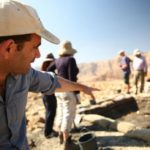 Timna Valley, in southern Israel, is one of the best-preserved ancient copper mining regions in the world. It has hundreds of mining and smelting sites that represent more than 6,000 years of copper exploitation. Since 2012, we have been excavating the ancient mines, applying advanced dating techniques on the remains. We found that the most intense production period was 3,000 years ago, which was exactly the time of King David and Solomon in Jerusalem. So we have the big question – did we find King Solomon’s mines? We applied different analytic methods to the various archaeo-botanic finds and remains of cloth and textiles. Because it’s so dry, we have materials that we don’t usually find in archaeology. We can study the way people dressed at this time period, and the technology – how they made copper out of the rock. We continue to explore this topic together with experts from many different universities; we’ll undoubtedly provide more answers in the future.
Timna Valley, in southern Israel, is one of the best-preserved ancient copper mining regions in the world. It has hundreds of mining and smelting sites that represent more than 6,000 years of copper exploitation. Since 2012, we have been excavating the ancient mines, applying advanced dating techniques on the remains. We found that the most intense production period was 3,000 years ago, which was exactly the time of King David and Solomon in Jerusalem. So we have the big question – did we find King Solomon’s mines? We applied different analytic methods to the various archaeo-botanic finds and remains of cloth and textiles. Because it’s so dry, we have materials that we don’t usually find in archaeology. We can study the way people dressed at this time period, and the technology – how they made copper out of the rock. We continue to explore this topic together with experts from many different universities; we’ll undoubtedly provide more answers in the future.
Prof. Iftach Haitner, The Blavatnik School of Computer Science at the Raymond and Beverly Sackler Faculty of Exact Sciences – The Development and Application of Cryptography
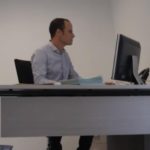 Most people associate cryptography with encryption, but modern cryptography is much more exciting, introducing concepts like “zero-knowledge proofs” and “multi-party computation.” Zero-knowledge proof allows you to prove something without revealing the knowledge the proof is based upon, for instance proving you know a login and password without exposing the password itself. Multi-party computation allows you to compute a function of the input while only revealing the output. An important application of this is electronic voting, a process in which you are sure your vote is counted, yet not revealed to others. But can we be sure that these amazing cryptographic tools are indeed secure? In my research, we have made significant progress in proving their security and introducing new and more secure construction of these tools. This will enable us to make current theoretical dreams become real.
Most people associate cryptography with encryption, but modern cryptography is much more exciting, introducing concepts like “zero-knowledge proofs” and “multi-party computation.” Zero-knowledge proof allows you to prove something without revealing the knowledge the proof is based upon, for instance proving you know a login and password without exposing the password itself. Multi-party computation allows you to compute a function of the input while only revealing the output. An important application of this is electronic voting, a process in which you are sure your vote is counted, yet not revealed to others. But can we be sure that these amazing cryptographic tools are indeed secure? In my research, we have made significant progress in proving their security and introducing new and more secure construction of these tools. This will enable us to make current theoretical dreams become real.